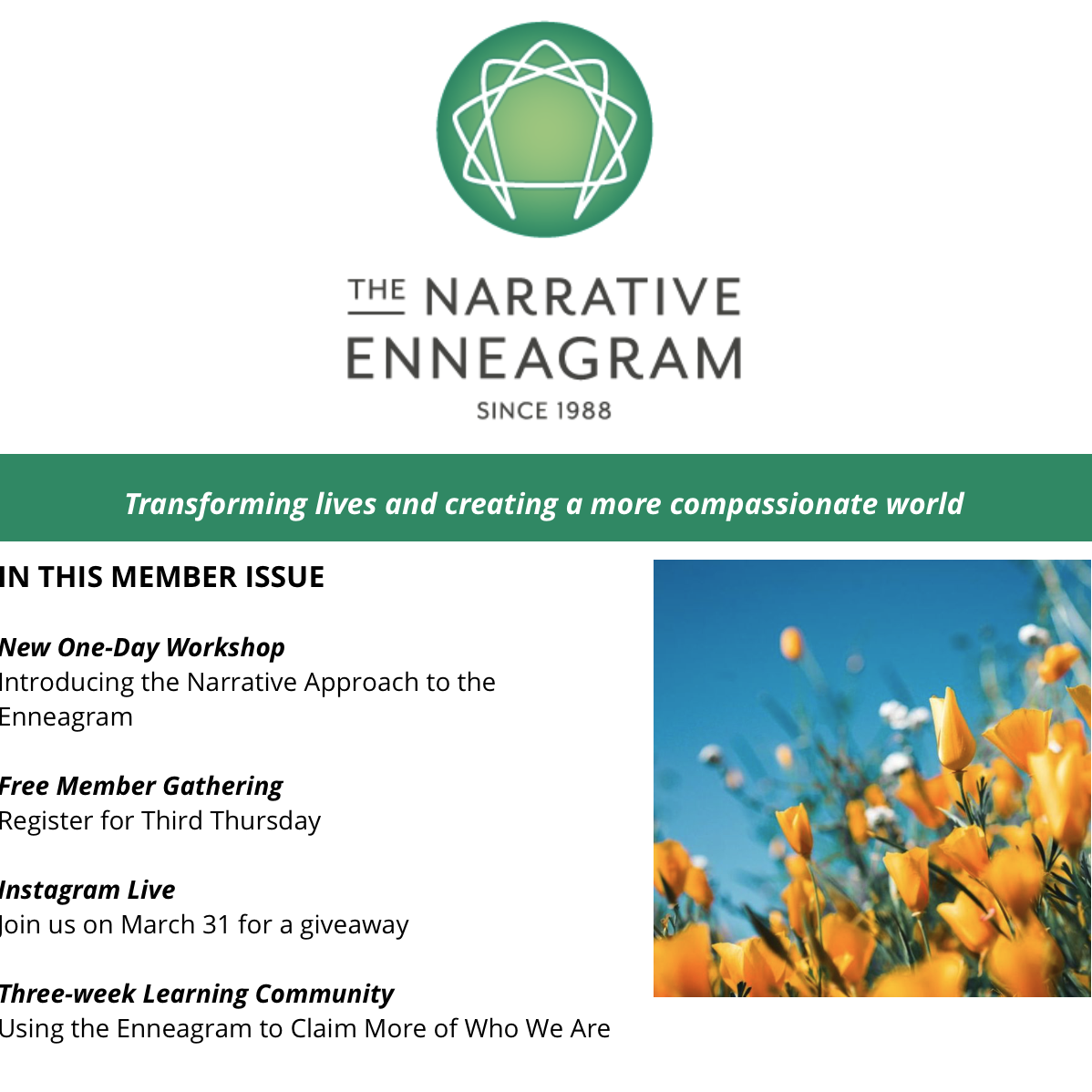The Enneagram of types is part of an oral teaching tradition. The material is best transmitted by seeing and hearing groups of people of the same type speak about their lives. Seeing and hearing a group of articulate and willing people express a similar point of view transmits far more of the power of the system then can possibly be conveyed by a mere written record of their words. After about an hour, a group of people who start out looking physically very different begin to seem the same. The viewer can sense the similarities in physical holding patterns, emotional tone, the tension points in the face, and the qualities of personal emanation that are the more subtle signs of type.
There is a unique feel to each of the types, a distinguishing quality. The auditorium fills with a definite presence as the character unfolds. A group of the same type can initially appear to have nothing in common, because the viewer is paying attention to their differences in sex, age, race, profession, and personal style. Within an hour, however, they begin to look the same. Their histories, their choices, their preferences, their goals, what they avoid and what they dream about begin to seem the same. They even start to look a like, once your attention shifts from the surface features of apparel and a personable smile. When your attention moves beyond surface cues, you can recognize type by falling into an appreciation of the aspirations and the difficulties that the members of a type all share.
The world looks very different to each of the nine, and by lending yourself to the way that others feel within themselves, you can shift out of your own point of view into a true understanding of who the people in your life actually are, rather than what your ideas about them might lead you to believe. By lending yourself to the ways of others, a sense of compassion for their situation opens. When you see the world through the lens of a different mind, you are immediately made aware that each type is limited by a systematic bias.
I am always moved by the power of this teaching when I recognize the central patterns of my own life in the stories of a group of my “similars”. They are contemporary stories that take place in ad agencies and supermarkets and college classrooms and meditation halls. They are told by people who have my thought patterns and are living out of their stories in the way that I live mine. I know that I can count on them for information, for counsel, and for a revelation for what they have seen within themselves.
What makes the telling of personal history stunning is that the self-disclosure of profoundly intimate material is given with the intention of putting oneself aside. The intention behind telling your own story is, of course, to get some clarity about the patterns that drive your life, but in this case, the goal of self-understanding is to learn to observe your patterns internally, detach from them, and eventually, relax the preoccupation at will. The “setting aside” implied by a system that encompasses several states of consciousness means more than simply working a problem through until the suffering subsides. Setting the personality aside means being able to detach attention from thoughts and feelings, so that other perceptions can emerge.
The statements in my books are taken from the tape recorded voices of people who spoke, on a panel for their own type. They were willing to appear and to self-disclose so that an audience could learn to recognize type in the oral way. When I interview panels, the focus of attention is always on what makes a type distinctive from the others, so the line of questioning that I have developed is biased toward what is unique about each of the nine points, rather than how they are the same.
It is important to stress the ways in which people are different from each other, because so much of the suffering that we experience in our relationships is caused by the fact that we are blind to their point of view. We simply do not appreciate the reality of others with whom we live and work. My panel interviews are conducted within the narrative tradition, and give voice to these different realities. In the process, each type speaks for themselves as both witness and teacher.
See Palmer, The Enneagram: Understanding Yourself and the Others in Your Life. San Francisco: Harper Collins, 1988. pp. 4-9, 12-15.


Comments
Jenny knight says
Dear Helen,
It is with respect and gratitude that I leave this comment. I had the pleasure of hearing your call during the enneagram global summit and it was wonderful. Thank you for sharing your story of continued self growth and spiritual awareness. Your particular message resonated deep within me and your guided meditation was very helpful. I am a 31 year old first grade teacher in Charlotte, NC. I have applied the enneagram in my life and in my classroom. Thank you for your courage in following your intuition of studying and developing the enneagram. I am having this revelation as a early childhood teacher. I see the benefit that the enneagram studies have in cultivating “happy” learning communities. I plan to become a Certified ESNT teacher. Recognizing and Seizing the opportunity to gain knowledge and perspective is a gift. Thank you for sharing your gifts!
With gratitude and an open heart;)
Jenny Knight
Leslie Allen says
I would also like to say thank you for speaking so openly and personally in the global summit last June. It was an important teaching, and important modeling as well.
Leave a reply